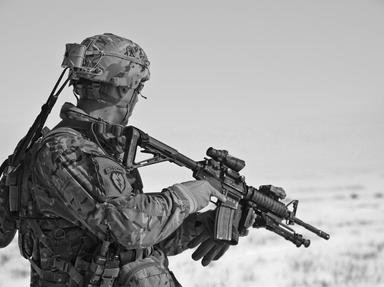Quiz Answer Key and Fun Facts
1. The Xyston was a long lance-type weapon used by warriors in which ancient civilisation?
2. The kopis was a sword used by warriors in Ancient Greece in battle - and for which other purposes?
3. Mankind has been dedicated to the art of trying to exterminate the entire human race ever since it first began, it seems. Dating back an incredible 300,000 years, evidence of which early weapon has been found in Germany?
4. By the Bronze Age, and from then on, man was building fortified structures in which to live, and subsequently defend from enemies. What is the name of this object used for warlike purposes?
5. Evidence of early solid wooden wheels has been found dating back to 4,000 BC. Which further enhancement to the wheel really helped improve the efficiency of war chariots on battle fields?
6. During battles at sea, and there were many of these in ancient times, what was the name given to the fast and agile ship equipped with three levels of rowers?
7. With this grim weapon, you could either hack or hook an enemy with one end, or impale him with the other. Oh, happy thought. Do you know its name?
8. This pictured weapon, which is a perfect reconstruction of its kind, was used a little like a giant bow and arrow. What is its name?
9. There were two versions of this ghastly looking weapon, the two-handed or the one-handed, but both were called which name?
10. This pictured giant creation was used as a siege weapon during warfare right up until the late Middle Ages. Can you name it?
Source: Author
Creedy
This quiz was reviewed by FunTrivia editor
stedman before going online.
Any errors found in FunTrivia content are routinely corrected through our feedback system.


